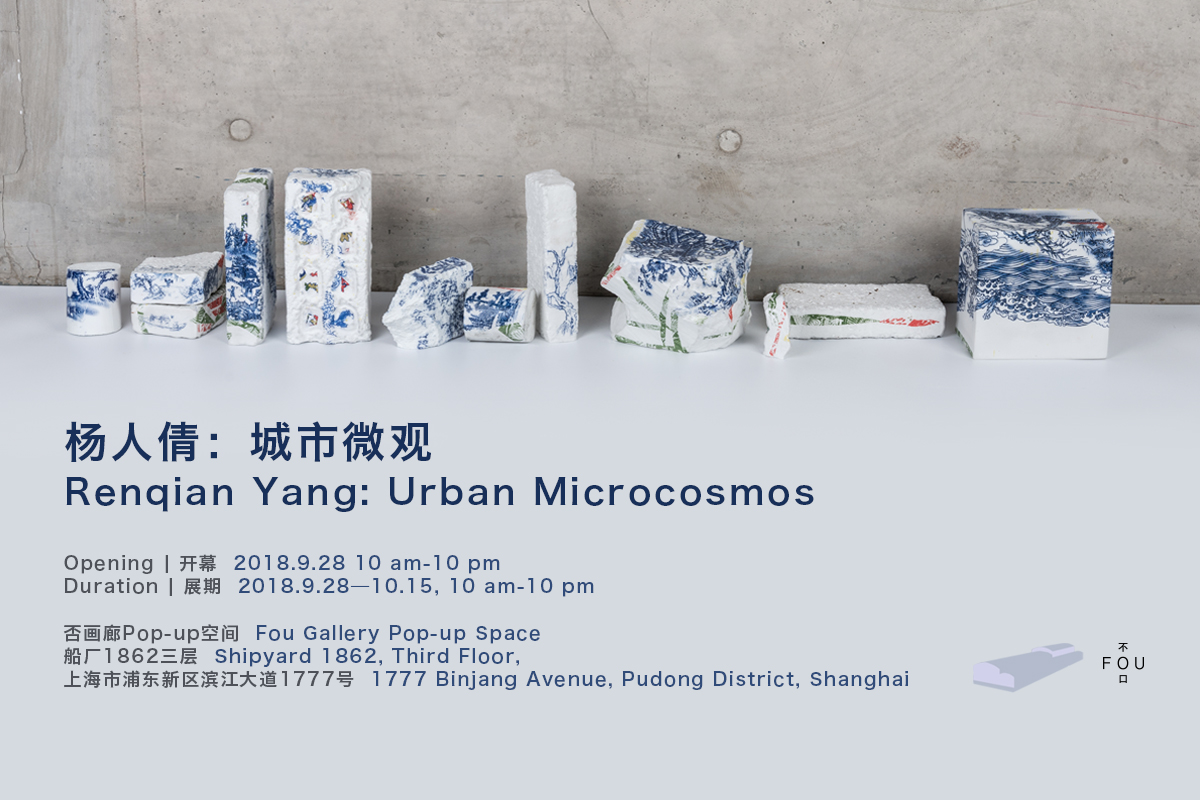
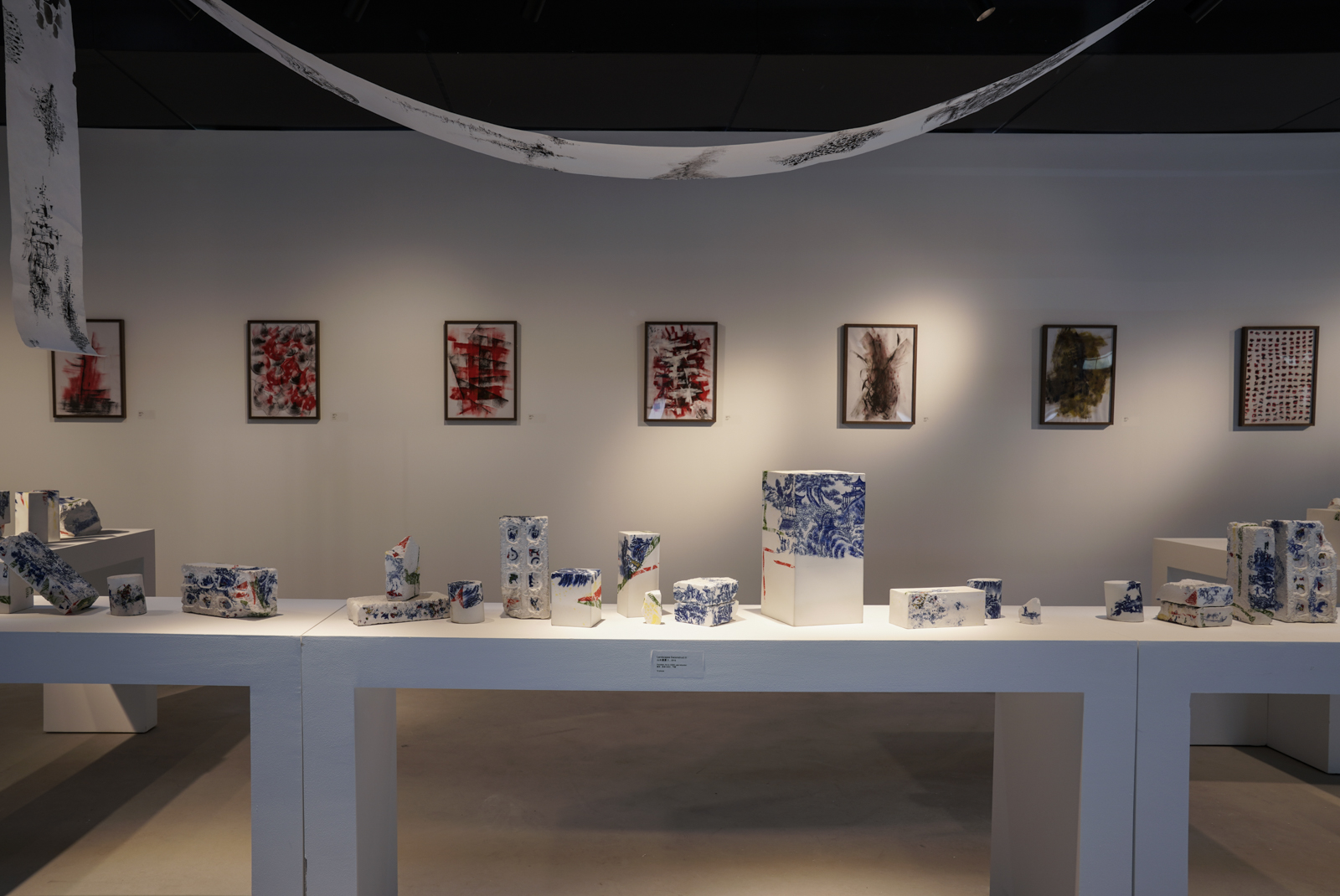
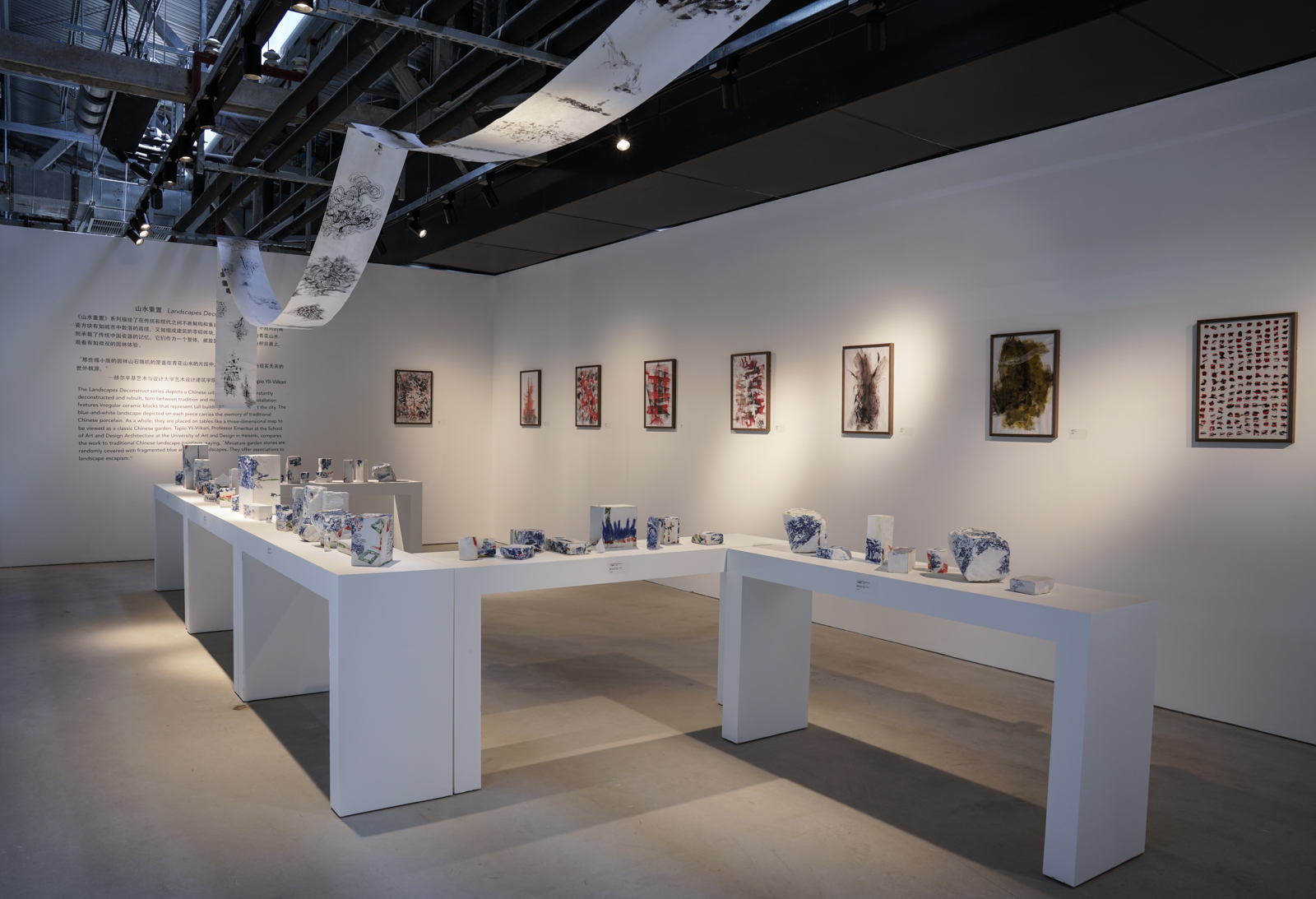
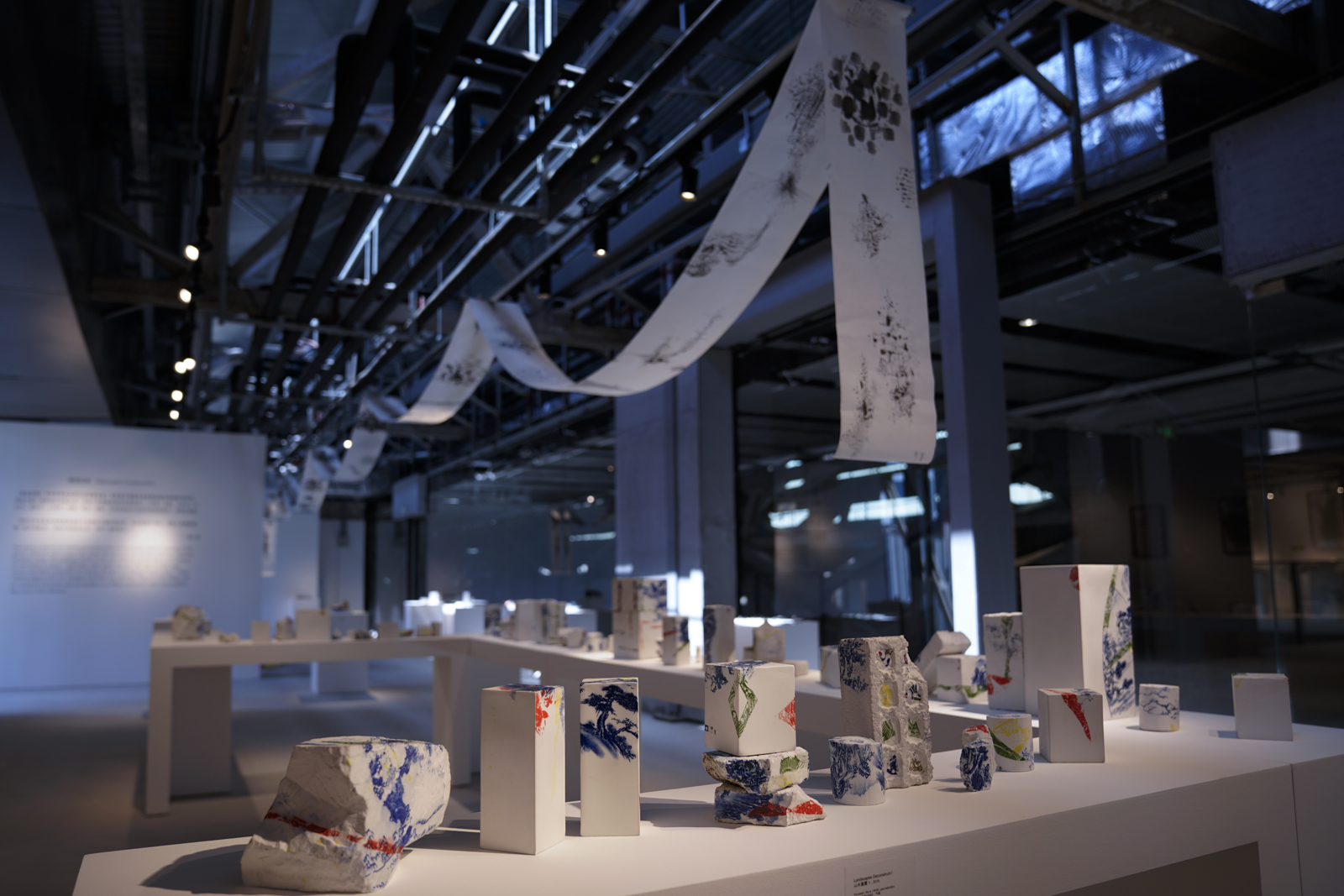
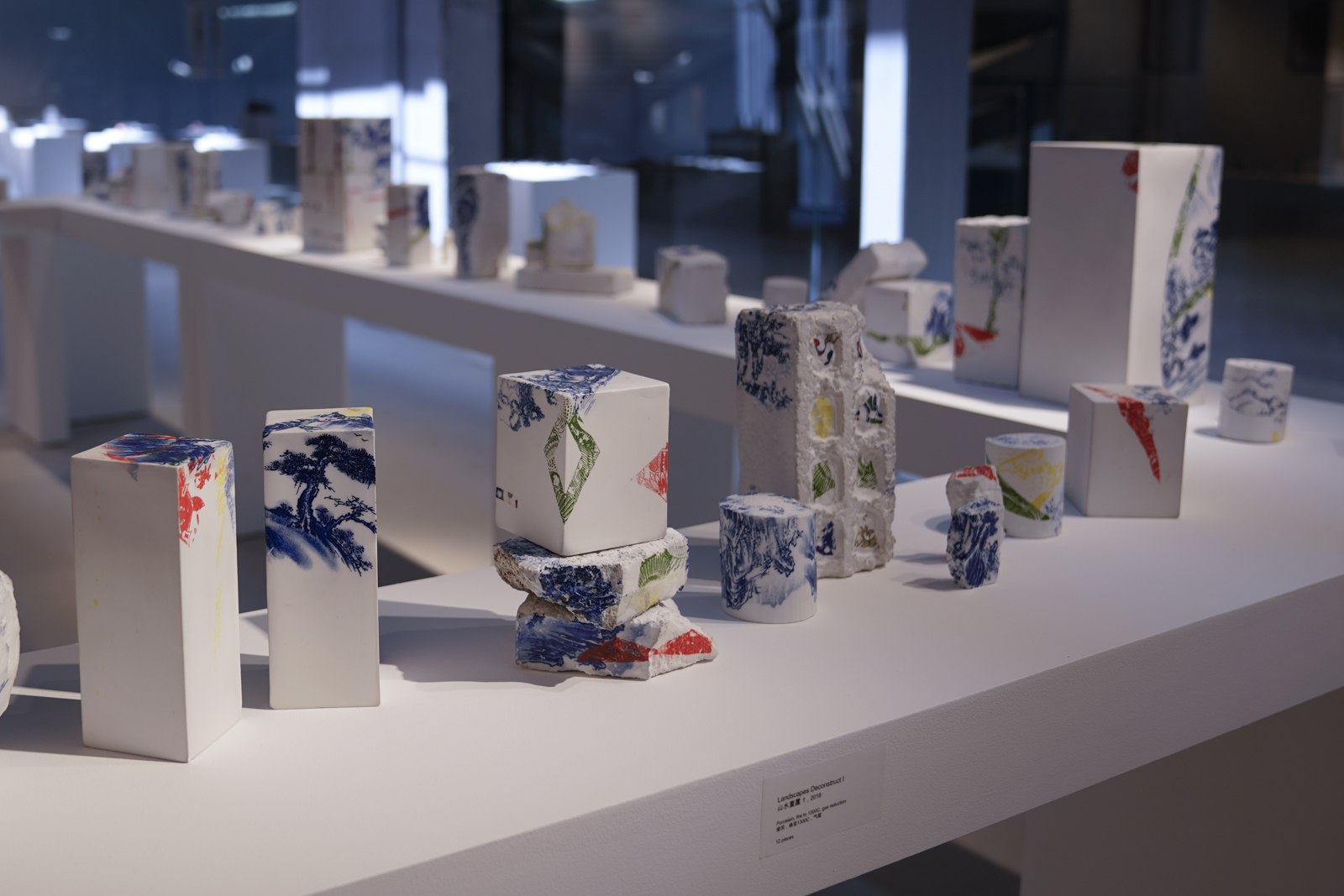
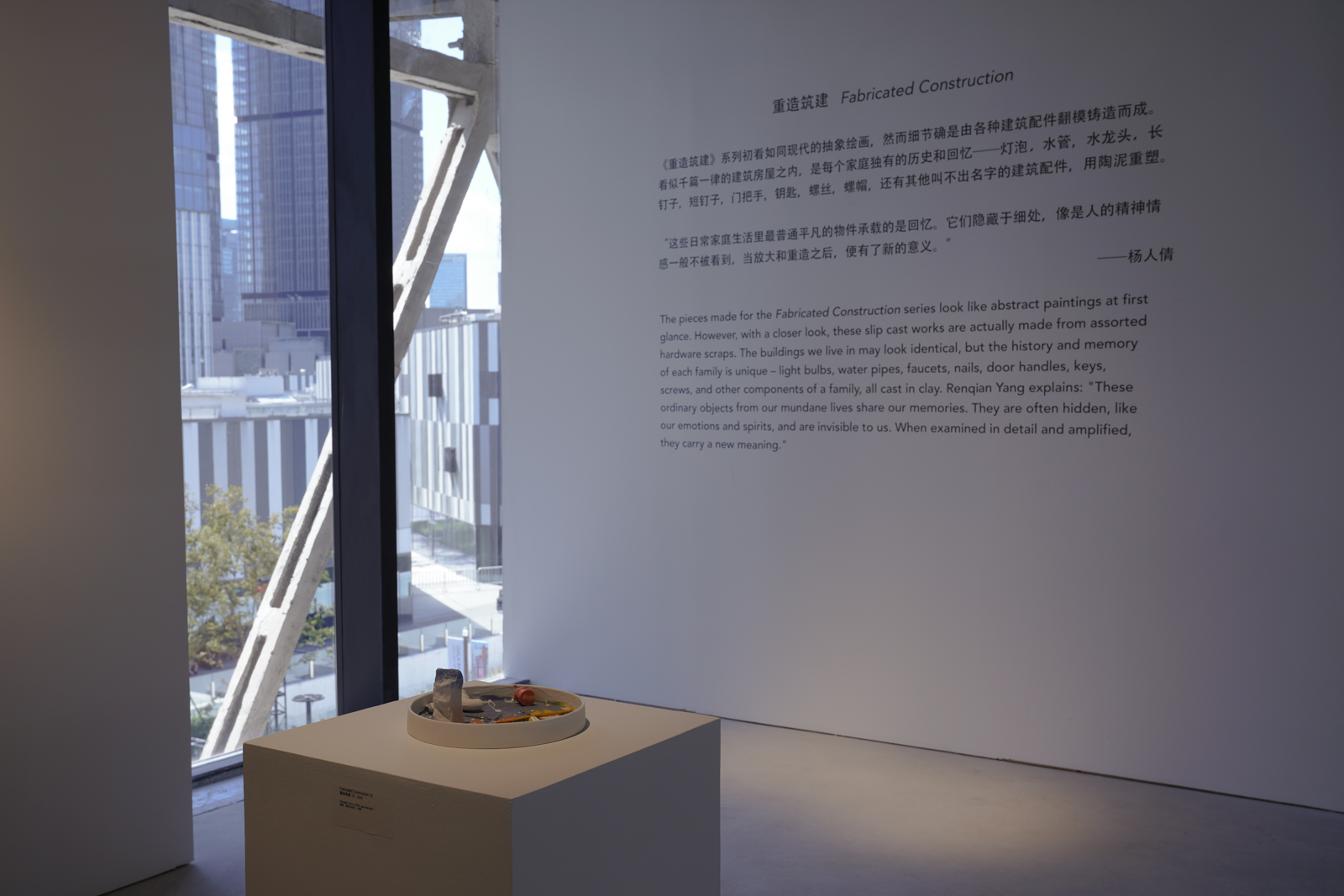
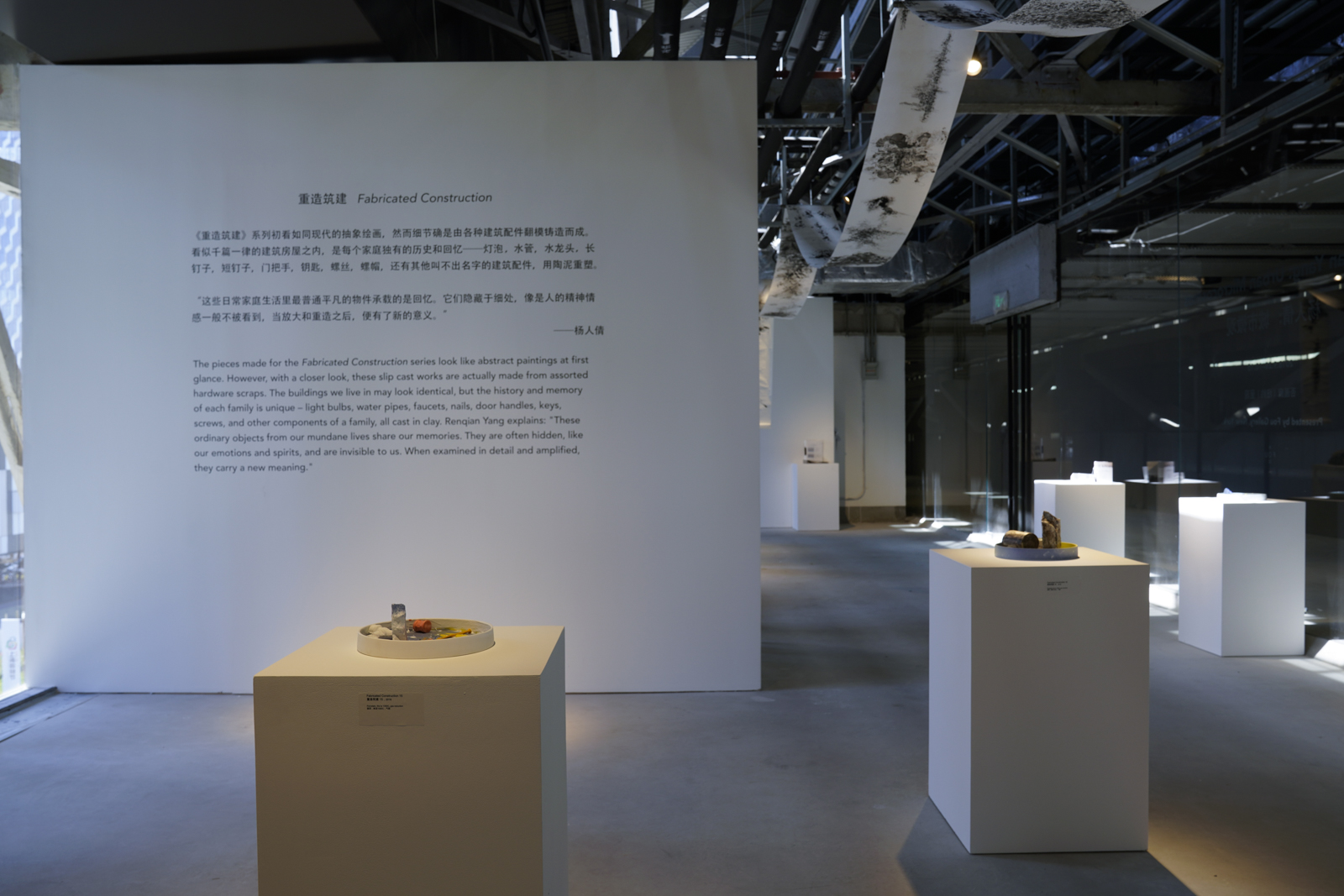

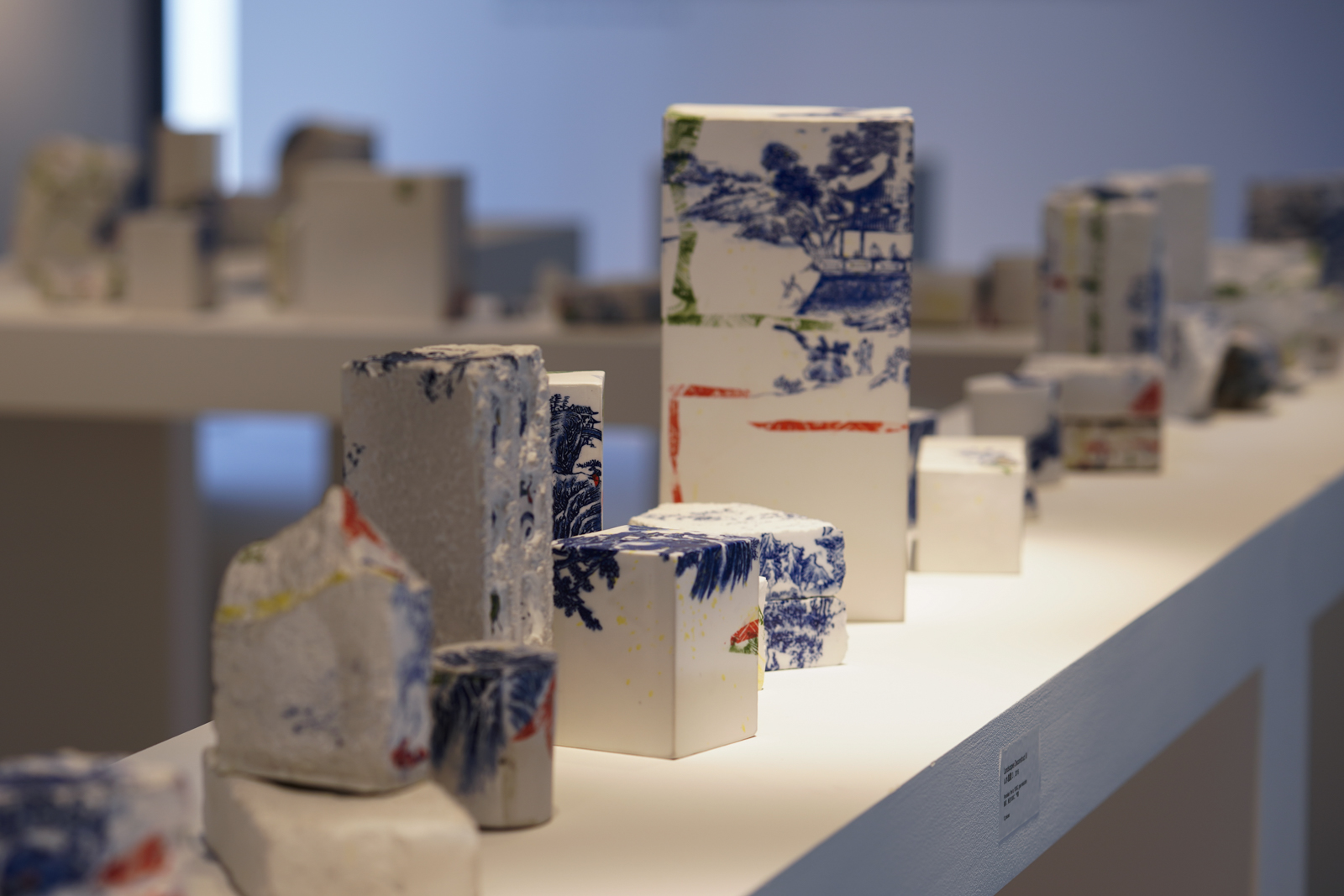
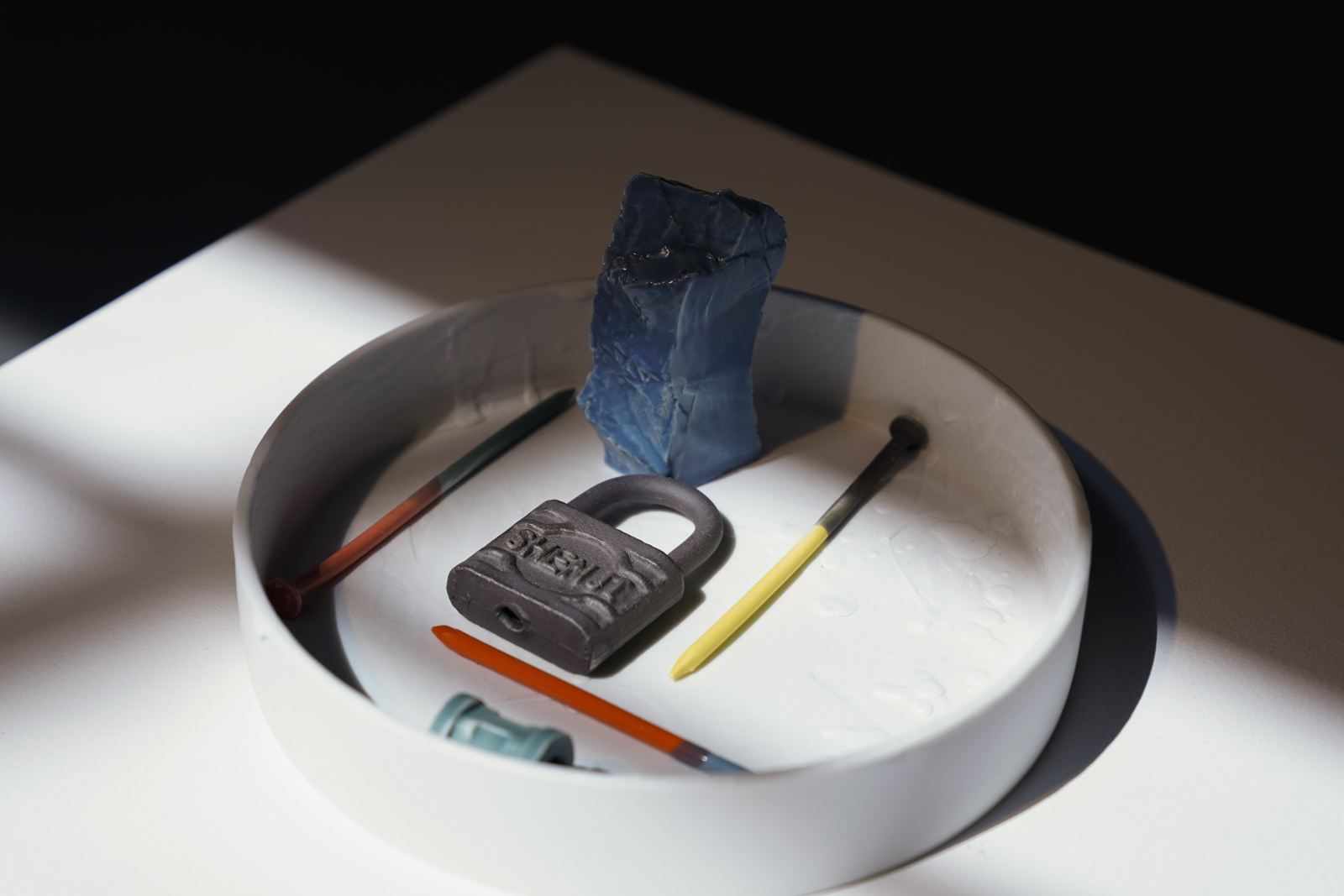
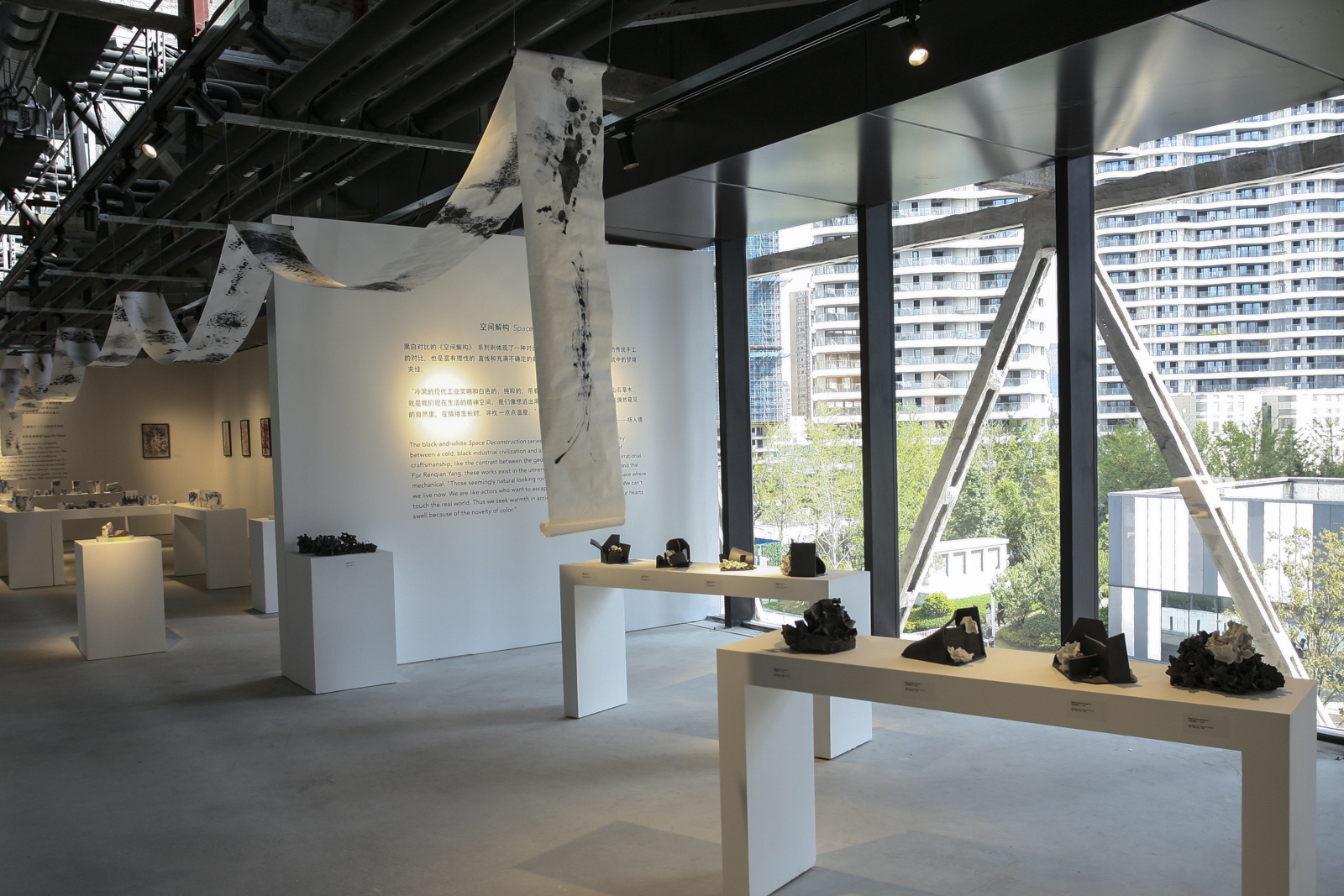
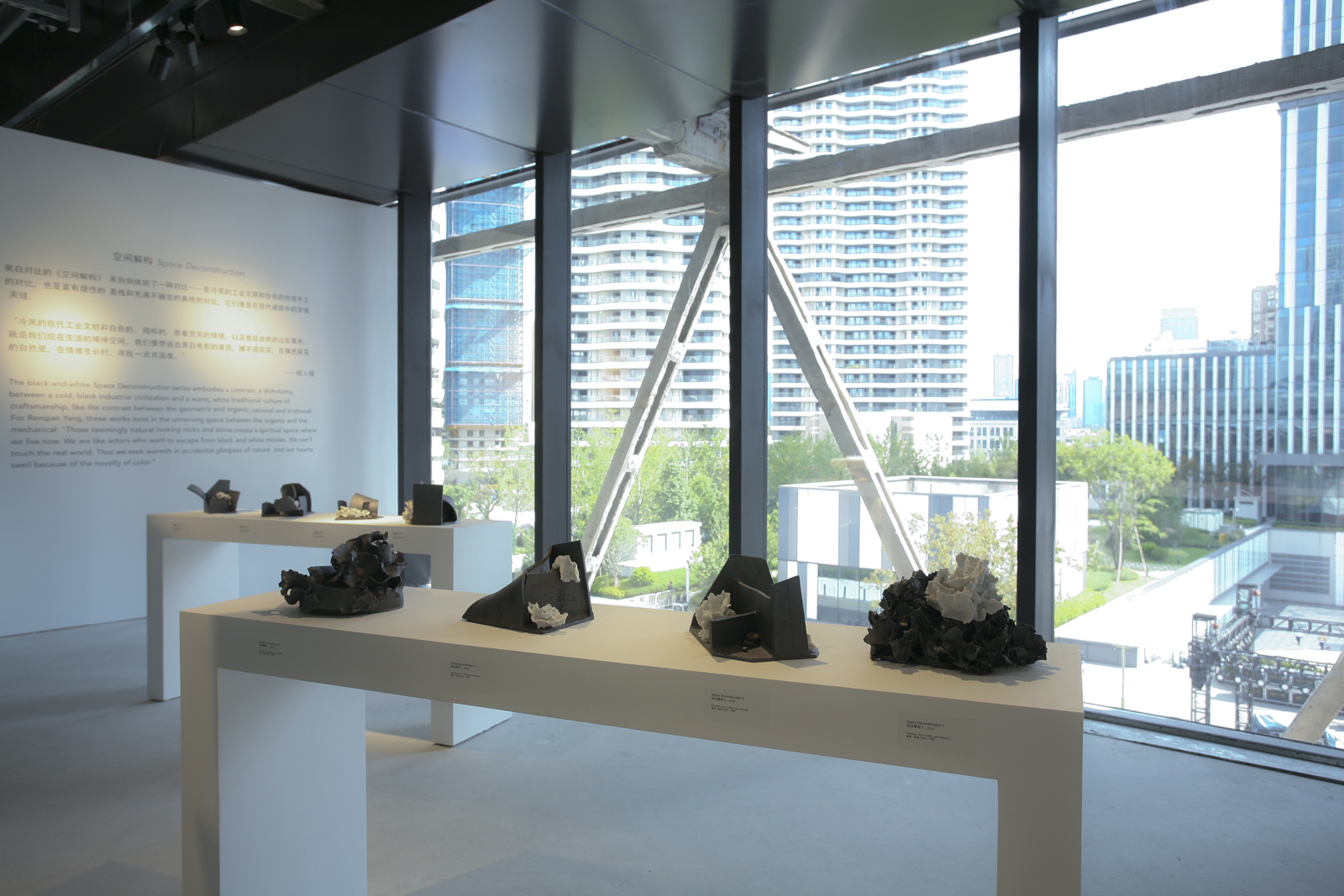
Renqian Yang: Urban Microcosmos 杨人倩:城市微观
Sep. 28–Oct. 15, 2018
Opening Reception:September 28, 2018, 10 am–10 pm
Location:Fou Gallery Pop-up Space, Shipyard 1862, Third Floor, 1777 Binjang Avenue, Pudong District, Shanghai | 否画廊Pop-up空间,船厂1862三层,上海市浦东新区滨江大道1777号
Artist
Shanghai - Shipyard 1862, rebuilt from the 150-year-old Xiangsheng Shipyard, is reopened. Founded in 1862 in Shanghai, Xiangsheng Shipyard stands on the banks of the Huangpu River and has witnessed change in the city for a century and a half. Under the design of Kengo Kuma, the building will bring cultural and artistic atmosphere to the Lujiazui Financial District. On the third floor of the Shipyard 1862 building, four galleries from New York, Beijing and Shanghai (ShanghART Gallery, Boers-Li Gallery, Fou Gallery, Tong Gallery+projects) will present a unique “Shanghai Story.” Each exhibition is independently curated by the gallery, and artists from different cities in different eras will tell the evolving story of the city.
Fou Gallery is pleased to present Renqian Yang’s solo exhibition Urban Microcosmos, including her recent ceramic installation, sculptures created in Jingdezhen, and early abstract works on paper. Yang finds inspiration in negligible fragments of urban life. She transforms things that we usually ignore but live with such as light bulbs, water faucets, and nails into unique ceramics and paintings. These objects are intended to keep things together, but now become useless and unconnected. Yang grew up as an artist across different cultural backgrounds. Born in Xiangtan, Hunan Province, she graduated from Sichuan Fine Arts Institute and went to the United States to study at Syracuse University. She obtained her M.F.A. in Ceramics in 2014 and now teaches at the State University of New York at Oswego. From the migration of the “ant tribe,” to the global phenomenon of urban sprawl, and the continuous dismantling and reconstruction of urban landscapes under high-speed development, Yang transforms the cities of her memories into miniature universes. As Yang says: "Constantly traveling between the U.S. and China, I witness an endless feast of construction without a beginning or an end. Buildings are being disintegrated and regenerated constantly; we are always influenced by the cities we live in. We deconstruct nature, we allow those artificial mountains and rocks to become part of our life, but seem to forget what a real rock looks like."
The Landscapes Deconstruct series depicts a Chinese urban scene that is constantly deconstructed and rebuilt, torn between tradition and modernization. The installation features irregular ceramic blocks that represent tall buildings scattered about the city. The blue-and-white landscape depicted on each piece carries the memory of traditional Chinese porcelain. As a whole, they are placed on tables like a three-dimensional map to be viewed as a classic Chinese garden. Tapio Yli-Viikari, Professor Emeritus at the School of Art and Design Architecture at the University of Art and Design in Helsinki, compares the work to traditional Chinese landscape paintings, saying, “Miniature garden stones are randomly covered with fragmented blue and white landscapes. They offer associations to landscape escapism."
Renqian Yang, Landscapes Deconstruct III, 2018, Porcelain, fire to 1300C, gas reduction, Various dimension, 12 pieces © Renqian Yang, courtesy Fou Gallery
Renqian Yang, Landscapes Deconstruct I, 2018, Porcelain, fire to 1300C, gas reduction, Various dimension, 12 pieces © Renqian Yang, courtesy Fou Gallery
The pieces made for the Fabricated Construction series look like abstract paintings at first glance. However, with a closer look, these slip cast works are actually made from assorted hardware scraps. The buildings we live in may look identical, but the history and memory of each family is unique – light bulbs, water pipes, faucets, nails, door handles, keys, screws, and other components of a family, all cast in clay. Yang explains: "These ordinary objects from our mundane lives share our memories. They are often hidden, like our emotions and spirits, and are invisible to us. When examined in detail and amplified, they carry a new meaning."
Renqian Yang, Fabricated Construction 12, 2018, Porcelain, fire to 1300C, gas reduction, 0.4 x 19.7 inch (dia.) © Renqian Yang, courtesy Fou Gallery
The black-and-white Space Deconstruction series embodies a contrast: a dichotomy between a cold, black industrial civilization and a warm, white traditional culture of craftsmanship, like the contrast between the geometric and organic, rational and irrational. For Yang, these works exist in the unnerving space between the organic and the mechanical: "Those seemingly natural-looking rocks and stone create a spiritual space where we live now. We are like actors who want to escape from black-and-white movies. We can't touch the real world. Thus we seek warmth in accidental glimpses of nature, and our hearts swell because of the novelty of color.”
Renqian Yang, Space Deconstruction 4, 2018, Porcelain, fire to 1300C, gas reduction, 13.4 x 7.9 x 5.9 inch © Renqian Yang, courtesy Fou Gallery
The exhibition also presents some of Yang's works on paper with her early reflections and diagrammatic experiments in ink brushstrokes. These seemingly abstract, asymmetric, and irregular shapes evoke mental images of urban sprawl: uncontrolled development and demolished natural landscapes. These works on paper seek a balance between man-made constraints and uncontrollable natural chaos.
上海 – 由百年历史的祥生船厂改建的船厂1862焕新启幕。始建于1862年的英商上海祥生船厂矗立于黄浦江畔,见证了一个半世纪以来的上海风云变幻。而在隈研武的设计下,它又为陆家嘴金融城带来了文化和艺术的气息。在船厂一至三层,来自纽约、北京、上海的四家画廊——香格纳画廊、博而励画廊、否画廊、Tong Gallery+projects将一起呈现《上海故事》。每个画廊独立策展,来自不同年代不同城市的艺术家将一起谱写一曲跨越时代的城市故事。
否画廊荣幸地呈现杨人倩的个展《微观城市》,包括她在景德镇最新创作的陶瓷装置,雕塑和早期的纸上抽象绘画作品。杨人倩从常被忽视的城市的日常生活中寻找灵感。石块、灯泡、水管、钉子这些伴随着我们的日常,却又常被忽视的元素被抽象为一件件独特的陶瓷和绘画作品。杨人倩在不同文化背景的交错之间成长为一名艺术家。她出生于湖南湘潭,在四川美术学院陶瓷专业毕业后,赴美就读于雪城大学 ,于2014年取得陶瓷学艺术硕士。目前在纽约州立大学奥斯威戈分校任教。从中国城乡结合部的蚁族,到满布世界的城市蔓延,以及在高速发展下不断拆解重建的城市景观,杨把回忆和现实的城市凝聚为一座座微型景观。杨说:“在不断离开中国又回到中国的反复中,我感受到的变化是一场没有开始也没有散场的的浩浩荡荡的建造盛宴。人在不断建造城市,城市在不断影响我们每一个人的生活;人在解构自然,让山山石石自然的成为我们生活的一部分,却不曾细心了解其原本的面貌。”
《山水重置》系列描绘了在传统和现代之间不断解构和重建的中国城市景象。不规则的陶瓷方块有如城市中散落的高楼,又如组成建筑的零碎砖块,而在其上描绘的的青花山水,则承载了传统中国瓷器的记忆。它们作为一个整体,被放置在有如回廊般的曲折台面上,观看有如微观的园林体验。赫尔辛基艺术与设计大学艺术设计建筑学院陶瓷学名誉教授Tapio Yli-Viikari 认为它们有如中国的传统山水风景画,是杨回归本源的尝试:“那些缩小版的园林山石随机的覆盖在青花山水的片段中,它们提供了一个与现实无关的世外桃源。”
《重造筑建》系列初看如同现代的抽象绘画,然而细节确是由各种建筑配件翻模铸造而成。看似千篇一律的建筑房屋之内,是每个家庭独有的历史和回忆——灯泡,水管,水龙头,长钉子,短钉子,门把手,钥匙,螺丝,螺帽,还有其他叫不出名字的建筑配件,用陶泥重塑。杨人倩说:“这些日常家庭生活里最普通平凡的物件承载的是回忆。它们隐藏于细处,像是人的精神情感一般不被看到,当放大和重造之后,便有了新的意义。”
黑白对比的《空间解构》系列则体现了一种对比——是冷黑的工业文明和白色的传统手工的对比,也是富有理性的直线和充满不确定的曲线的对比。对于杨人倩来说,它们像是在现代建筑中的梦境夹缝:“冷黑的现代工业文明和白色的,纯萃的,带着荒芜的情绪,以及看似自然的山石草木,就是我们现在生活的精神空间。我们像想逃出黑白电影的演员,摸不透现实,在偶然窥见的自然里,在情绪生长时,寻找一点点温度。”
展览还将呈现一些杨的纸上作品,早期的思考和实验凝聚在笔墨中,这些看似抽象非对称且不规则的形态好似城市空间蔓延的可视化图像。随着都市人口的膨胀,城市大幅向外发展,占据边缘的郊区地带,城市蔓延的失控发展带来很多自然景观的破坏,这幅图景却像极了自然本身的扩张和蔓延过程。这些纸上作品则试图在人造的限制和不受控制的混乱中寻求和谐。
Read the full press release CLICK HERE
查看完整的新闻稿,请点击这里。
Events
2018.9.28 10am —10pm
Opening Reception







